Welcome to the future: 11 ideas that went from science fiction to reality
These modern-day technologies appeared in science fiction decades before their time.
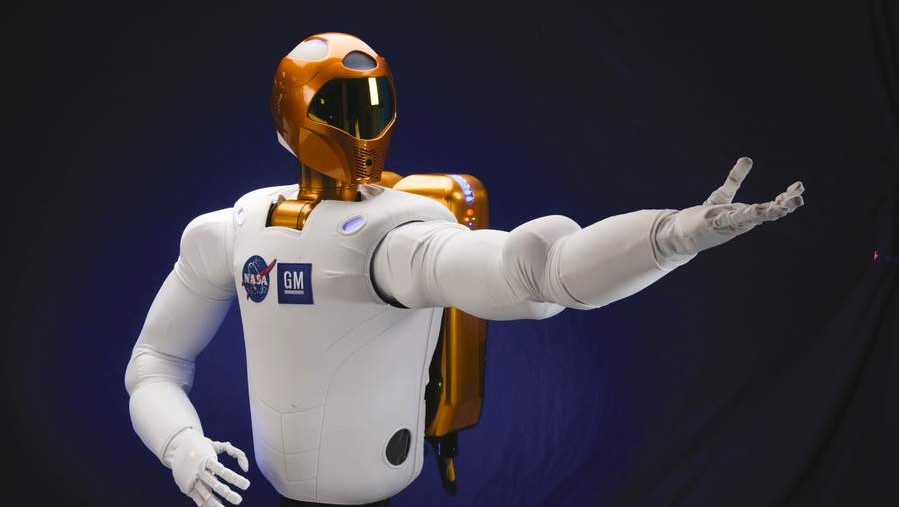
Science fiction has always been a medium for futuristic imagination and while different colored aliens and intergalactic travel are yet to be discovered, there is an array of technologies that are no longer figments of the imagination thanks to the world of science fiction. Some of the creative inventions that have appeared in family-favorite movies like "Back to the Future" and "Total Recall," are now at the forefront of modern technology. Here are a few of our favorite technologies that went from science fiction to reality.
The mobile phone
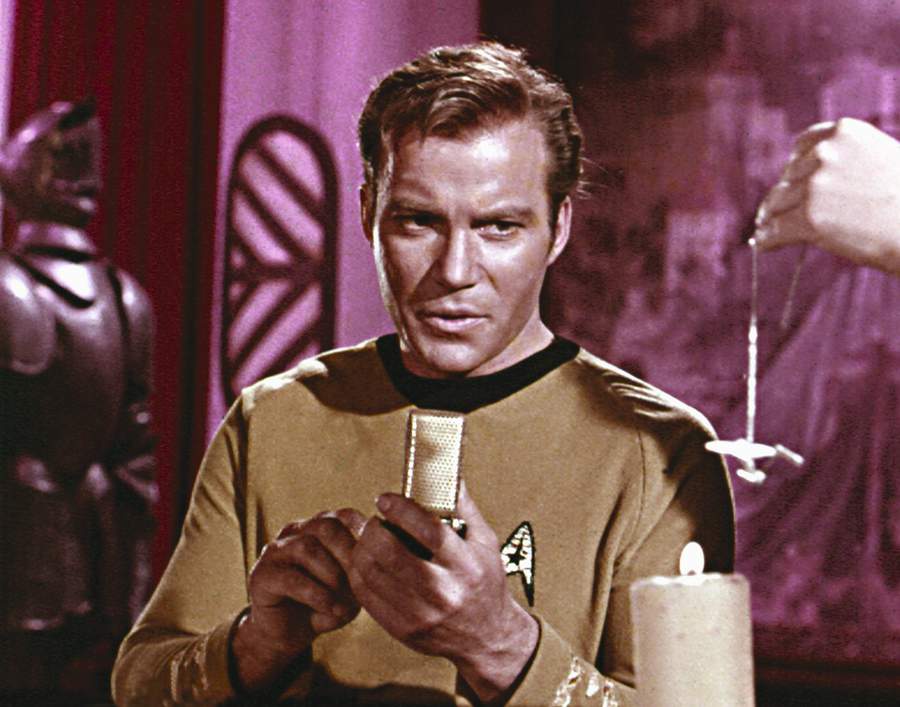
This article is brought to you by All About Space.
All About Space magazine takes you on an awe-inspiring journey through our solar system and beyond, from the amazing technology and spacecraft that enables humanity to venture into orbit, to the complexities of space science.
Subscribe for just $5 (or £5/€5).
From: "Star Trek: The Original Series"
It's something that almost everyone has in their pockets. Mobile phones have become a necessity in modern life with a plethora of remarkable features. The first mobile phone was invented in 1973, the Motorola DynaTAC. It was a bulky thing that weighed 2.4 lbs. (1.1 kilograms) and had a talk time of about 35 minutes. It also cost thousands of dollars.
The Motorola DynaTAC was invented by Martin Cooper, who led a team that created the phone in just 90 days. A long-standing rumor was that Cooper got his inspiration from an episode of Star Trek where Captain Kirk used his hand-held communications device. However, Cooper stated in a 2015 interview that the original inspiration was from a comic strip called Dick Tracy, in which the character used a "wrist two-way radio."
The universal translator
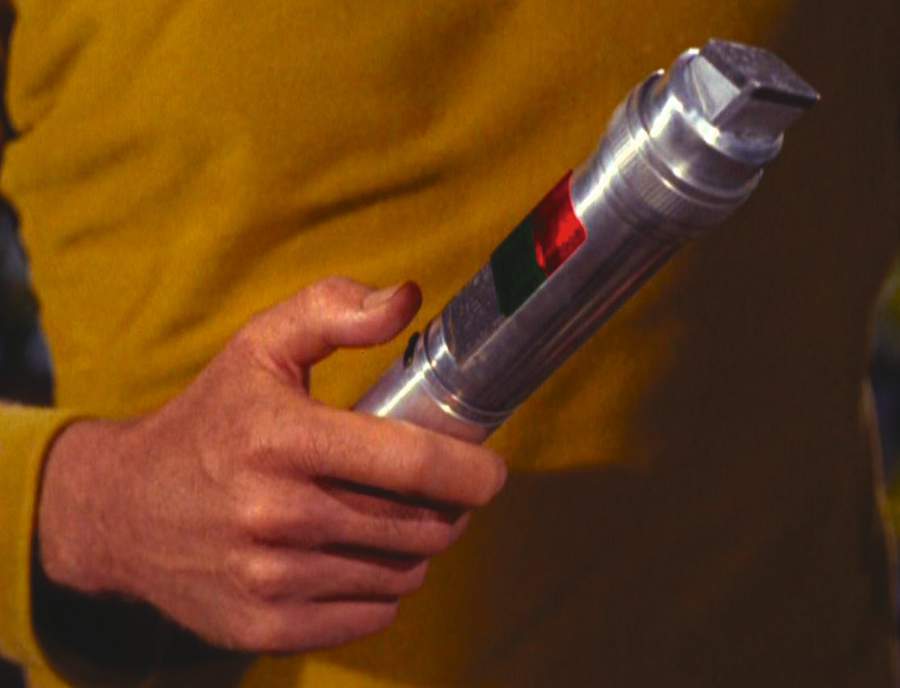
From: "Star Trek: The Original Series"
While exploring space, characters such as Captain Kirk and Spock would come across alien life who spoke a different language. To understand the galactic foreigners, the Star Trek characters used a device that immediately translated the alien's unusual language. Star Trek's universal communicator was first seen on screen as Spock tampered with it in order to communicate with a non-biological entity (Series 2 Episode 9, Metamorphosis).
Although the idea in Star Trek was to communicate with intelligent alien life, a device capable of breaking down language barriers would revolutionize real-time communication. Now, products such as Sourcenext's Pocketalk and Skype's new voice translation service are capable of providing instantaneous translation between languages. Flawless real-time communication is far off, but the technological advancements over the last decade mean this feat is within reach.
Teleportation
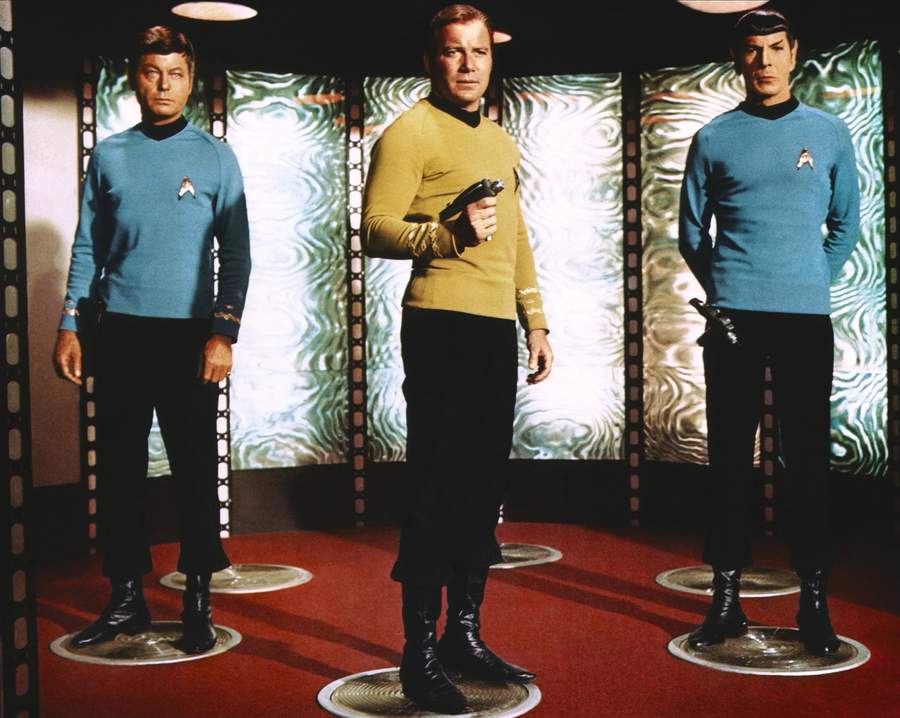
From: "Star Trek: The Original Series"
The idea behind "beaming" someone up was that a person could be broken down into an energy form (dematerialization) and then converted back into matter at their destination (rematerialization). Transporting people this way on Star Trek's USS Enterprise had been around since the very beginning of the series, debuting in the pilot episode.
Scientists haven't figured out how to teleport humans yet, but they can teleport balls of energy known as photons. In this case, teleportation is based on a phenomenon known as quantum entanglement. This refers to a condition in quantum mechanics where two entangled particles may be very far from one another, yet remain connected so that actions performed on one affect the other, regardless of distance. The information exchange between the two photons occurs at least 10,000 times faster than the speed of light.
Related: Chinese Scientists Just Set the Record for the Farthest Quantum Teleportation
3D holograms
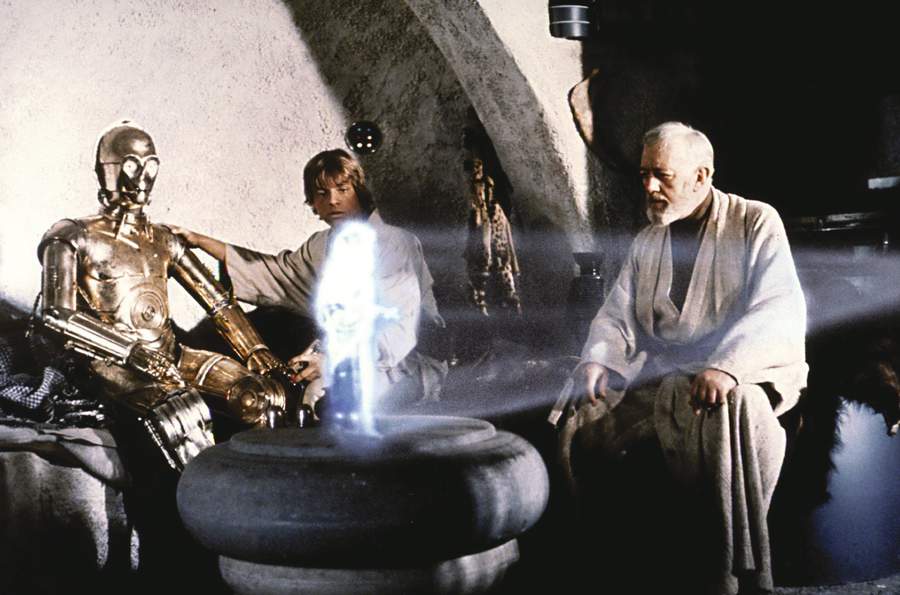
From: "Star Wars: Episode IV — A New Hope"
Not long into the first Star Wars movie, Obi-Wan Kenobi receives a holographic message. By definition, a hologram is a 3D image created from the interference of light beams from a laser onto a 2D surface, and can only be seen in one angle.
In 2018, researchers from Brigham Young University in Provo, Utah, created a real hologram. Their technique, called volumetric display, works like an Etch-A-Sketch toy, but uses particles at high speeds. With lasers, researchers can trap particles and move them into a designated shape while another set of lasers emit red, green and blue light onto the particle and create an image. But so far, this can only happen on extremely small scales.
Related: Cool! 'Star Wars'-Like Tech Warps Light into 360-Degree 3D Images
Bionic limbs
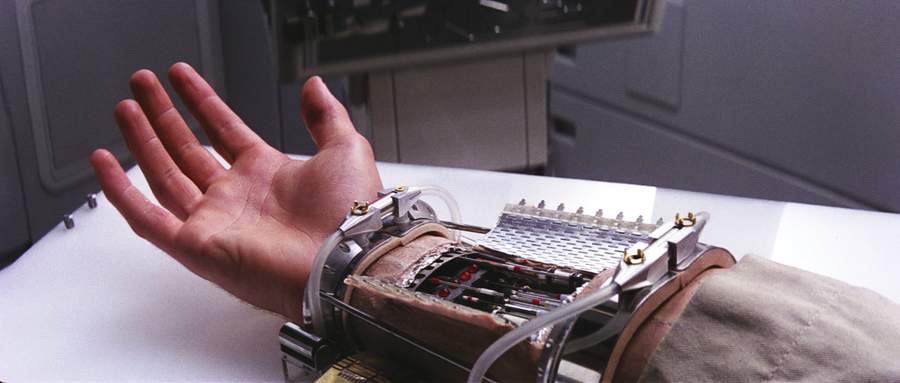
From: "Star Wars: Episode V — The Empire Strikes Back"
Imagine getting your hand chopped off by your own father and falling to the bottom of a floating building to then have your long-lost sister come and pick you up. It's unlikely in reality, but not in the Star Wars movies. After losing his hand, Luke Skywalker receives a bionic version that has all the functions of a normal hand. This scenario is now more feasible than the previous one.
Researchers from the Georgia Institute of Technology in Atlanta, Georgia, have been developing a way for amputees to control each of their prosthetic fingers using an ultrasonic sensor. In the movie, Skywalker's prosthesis uses electromyogram sensors attached to his muscles. The sensors can be switched into different modes and are controlled by the flexing or contracting of his muscles. The prosthesis created by the Georgia Tech researchers, however, uses machine learning and ultrasound signals to detect fine finger-by-finger movement.
Digital Billboards
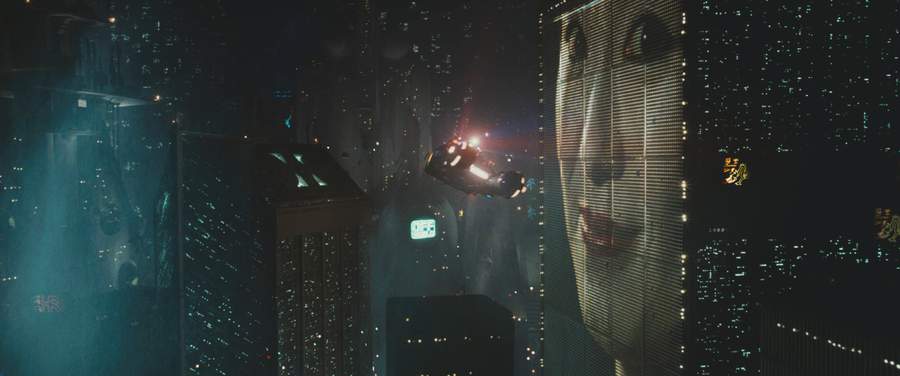
From: "Blade Runner"
Director Ridley Scott presents a landscape shot of futuristic Los Angeles in the movie "Blade Runner." While scanning the skyscrapers, a huge, digital, almost-cinematic billboard appears on one of the buildings. This pre-internet concept sparked the imagination of Andrew Phipps Newman, the CEO of DOOH.com. DOOH — which stands for Digital Out Of Home — is a company dedicated to providing live, dynamic advertisements through the use of digital billboards. The company is now at the forefront of advertising as it offers a more enticing form; one that will make people stop and stare.
Digital billboards have come a long way since DOOH was founded in 2013. They have taken advantage of crowded cities, such as London and New York, to utilize this unique advertising tactic. Perhaps the more recent "Blade Runner 2049" will bring us even more new technologies.
Artificial Intelligence
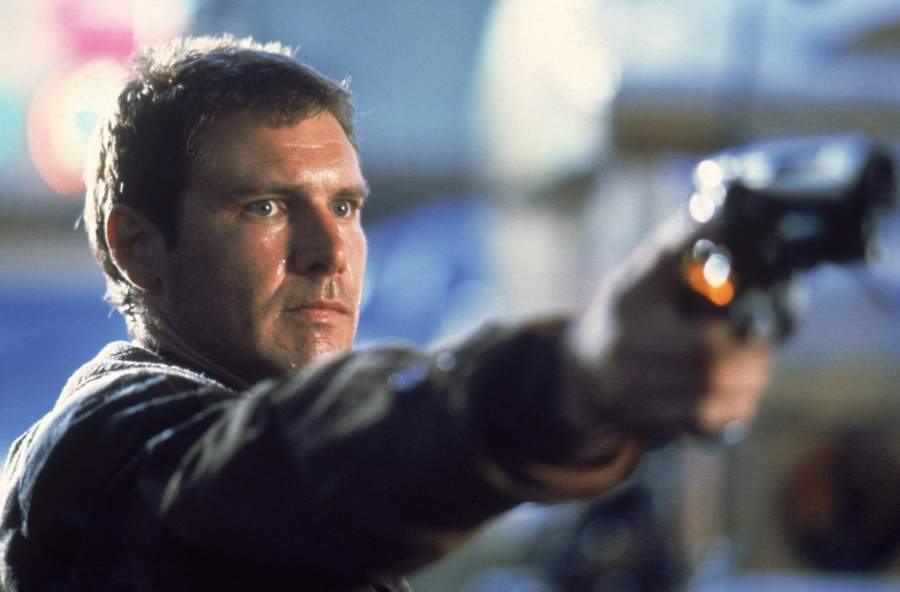
From: "Blade Runner"
The "Blade Runner" story heavily revolves around the idea of synthetic humans, which require artificial intelligence (AI). Some people might be worried about the potential fallout of giving computers intelligence, which has had disastrous consequences in many science-fiction works. But AI has some very useful applications in reality. For instance, astronomers have trained machines to find exoplanets using computer-based learning techniques. While sifting through copious amounts of data collected by missions such as NASA's Kepler and TESS missions, AI can identify the telltale signs of an exoplanet lurking in the data.
Related: Why You Shouldn't Expect to See 'Blade Runner' Replicants Anytime Soon
Space stations
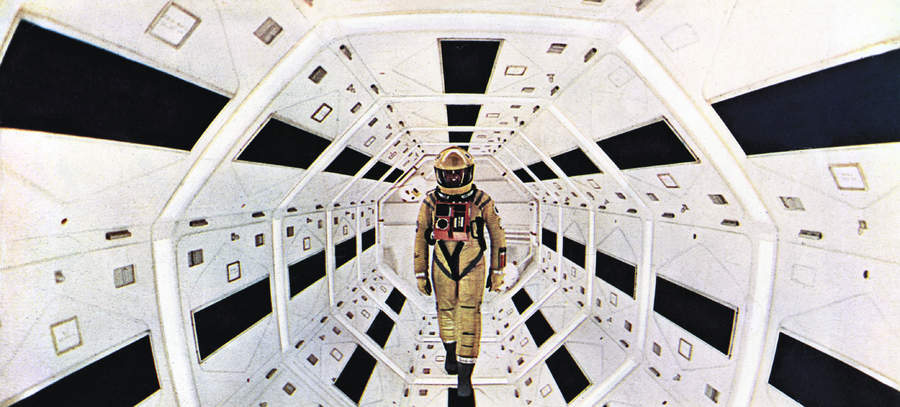
From: "2001: A Space Odyssey"
Orbiting Earth in "2001: A Space Odyssey" is Space Station V, a large establishment located in low-Earth orbit where astronauts can bounce around in microgravity. Does this sound familiar?
The Space Station V provided inspiration for the International Space Station (ISS), which has been orbiting the Earth since 1998 and currently accommodates up to six astronauts at a time. Although Space Station V appears much more luxurious, the ISS has accomplished much more science. The ISS has been fundamental to microgravity research since the start of its construction in 1998.
The Space Station V wasn't just an out-of-this-world holiday experience, it was also employed as a pit-stop before traveling to the Moon and other long-duration space destinations. The proposed Deep Space Gateway would be a station orbiting the moon that would serve a similar purpose.
Related: The 25 Greatest Spaceships of Science Fiction
Tablets
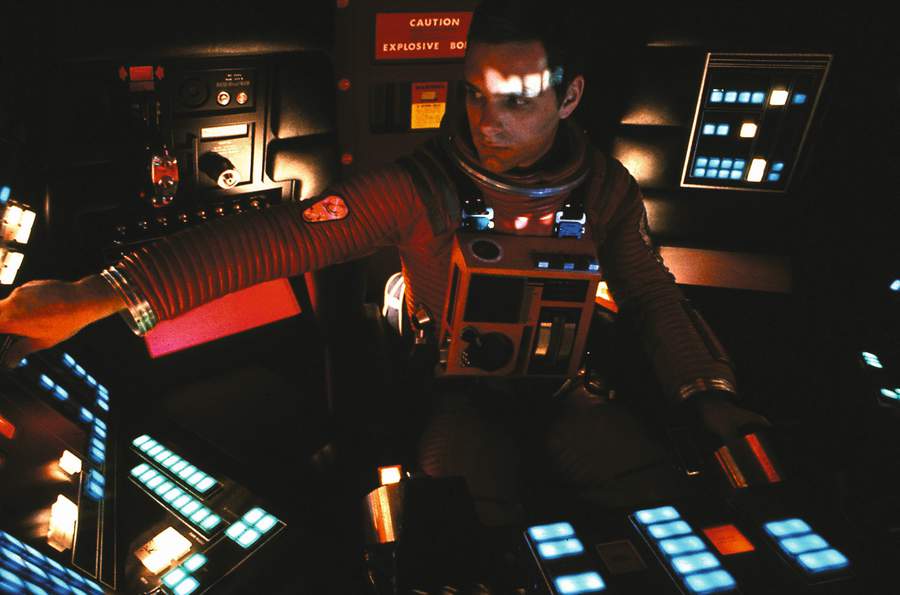
From: "2001: A Space Odyssey"
Tablets are wonderful handheld computers that can be controlled at the press of a finger. These handy devices are used by people across the globe, and even further upwards on the ISS. Apple claims to have invented the tablet with the release of its iPad. However, Samsung made an extremely interesting case in court that Apple was wrong: Stanley Kubrick and Sir Arthur C. Clarke did, by including the device in 2001: A Space Odyssey, released in 1968.
In the film, Dr. David Bowman and Dr. Frank Poole watch news updates from their flat-screen computers, which they called "newspads." Samsung claimed that these "newspads" were the original tablet, featured in a film over 40 years before the first iPad arrived in 2010. This argument was not successful though, as the judge ruled that Samsung could not utilize this particular piece of evidence.
Hoverboards
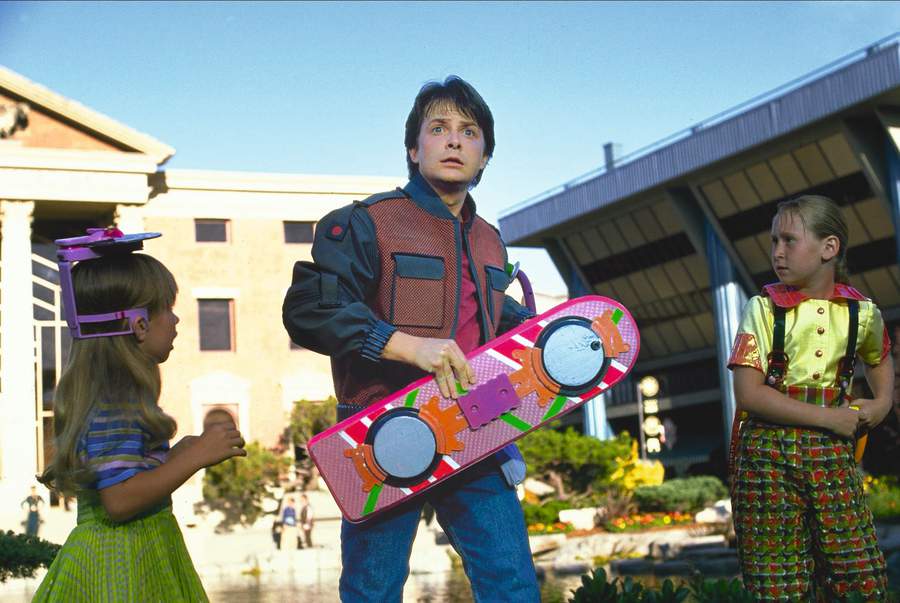
From: "Back to the Future Part II"
The Back to the Future trilogy is a highly enjoyable trio of time-traveling adventures, but it is Part II that presents the creators' vision of 2015. The film predicted a far more outlandish 2015 than what actually happened just five years ago, but it got one thing correct: hoverboards, just like the one Marty McFly "borrows" to make a quick escape.
Although they aren't as widespread as the film perceives, hoverboards now exist. The first real one was created in 2015 by Arx Pax, a company based in California. The company invented the Magnetic Field Architecture (MFA™) used to provide the levitation of a hoverboard. The board generates a magnetic field, which in turn creates an eddy current, which then creates another opposing magnetic field. These magnetic fields repel each other against a copper "hoverpark" that provides lift.
Driverless cars
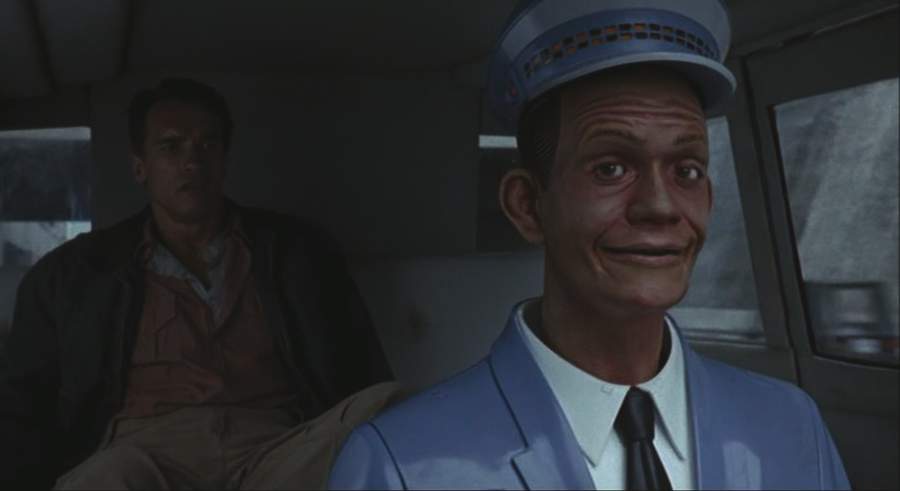
From: "Total Recall"
In the 1990 film, set in 2084, Total Recall's main protagonist Douglas Quaid (played by Arnold Schwarzenegger) finds himself in the middle of a sci-fi showdown on Mars. In one scene Quaid is on the run from the bad guys and jumps into a driverless car. In the front is "Johnny Cab," which is the car's on-board computer system. All Johnny needs is an address to take the car to its intended destination.
Although the driverless car wasn't seen in action before the protagonist yells profanities and takes over the driving, the idea of having a car that takes you to your destination using its onboard satellite navigation has become increasingly popular. The company at the forefront of driverless cars is Waymo, as they want to eradicate the human error and inattention that results in dangerous and fatal accidents.
In 2017, NASA stated its intentions to help in the production of driverless cars, as they would improve the technologies of robotic vehicles on extraterrestrial surfaces such as the Moon or Mars.
Additional resources:
- The 'Star Trek' Holodeck: From Science Fiction to a New Reality
- Star Trek: History & Effect on Space Technology
- Meet CIMON, the 1st Robot with Artificial Intelligence to Fly in Space
- Best Space Movies in the Universe
This article was adapted from a previous version published in All About Space magazine, a Future Ltd. publication. Email Lee Cavendish at lee.cavendish@futurenet.com. Follow us on Twitter @Spacedotcom and on Facebook.
SPRING: Get 5 issues in print or digital for just £5, $5 or €5!
All About Space magazine takes you on an awe-inspiring journey through our solar system and beyond, from the amazing technology and spacecraft that enables humanity to venture into orbit, to the complexities of space science.
Join our Space Forums to keep talking space on the latest missions, night sky and more! And if you have a news tip, correction or comment, let us know at: community@space.com.
Get the Space.com Newsletter
Breaking space news, the latest updates on rocket launches, skywatching events and more!
Lee Cavendish holds a degree in Observational Astronomy from the University of South Wales, United Kingdom, where his research interests focused on studying the main types of eclipsing binary star systems: Algol, Beta Lyrae and W Ursae Majoris. He is the former staff writer for our sister publication All About Space magazine, where he covered everything from the latest space technologies and mission launches to planetary science and complexities of the universe.













